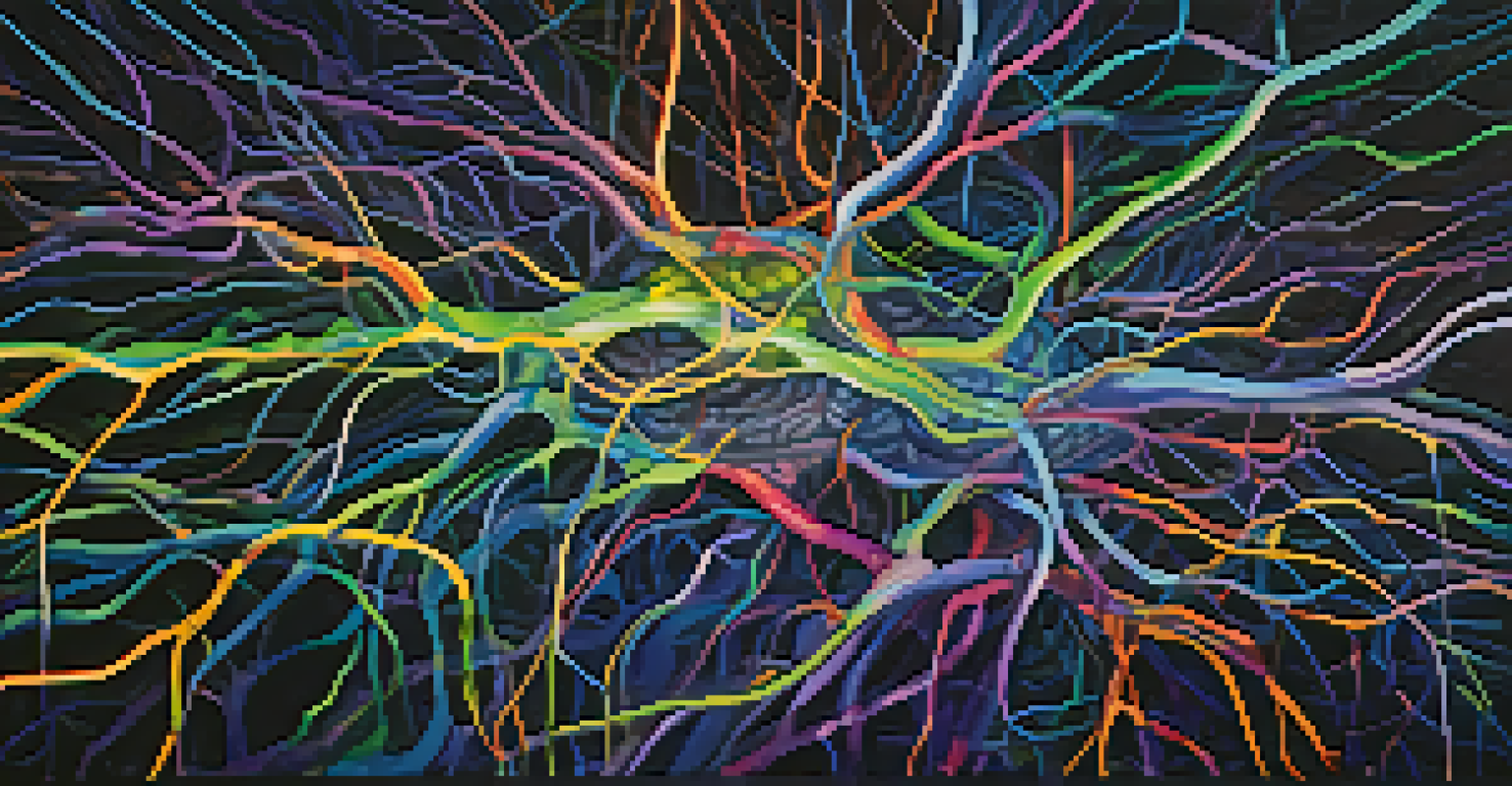DMT vs. LSD: Mechanisms of Action in the Brain

Introduction to DMT and LSD: A Brief Overview
DMT and LSD are both powerful psychedelics that have intrigued researchers and users alike. While they share similarities, such as inducing altered states of consciousness, their chemical structures and effects on the brain differ significantly. Understanding these differences can shed light on how each substance influences perception and cognition.
Psychedelics can help alleviate symptoms of anxiety, depression, and PTSD by promoting new neural connections and perspectives.
DMT, or dimethyltryptamine, is often referred to as the 'spirit molecule' due to its profound spiritual experiences reported by users. LSD, or lysergic acid diethylamide, is known for its more extended and varied effects on mood and thought processes. Both substances have been used in different cultural contexts, from traditional shamanic rituals to modern therapeutic settings.
This article will delve into the mechanisms of action for both DMT and LSD, revealing how they interact with our brain's chemistry to create unique experiences.
The Chemical Structures: DMT vs. LSD
At a molecular level, DMT and LSD have different chemical structures that shape their effects. DMT is a tryptamine, closely related to serotonin, a neurotransmitter that regulates mood and perception. In contrast, LSD is a lysergamide, significantly altering serotonin pathways but also interacting with other neurotransmitter systems.

These structural differences play a crucial role in how the body metabolizes each substance and their subsequent effects. For instance, the simplicity of DMT’s structure allows for a rapid onset of effects, while LSD's complex structure results in a longer-lasting experience. Understanding these nuances helps clarify why each psychedelic feels so different.
DMT vs. LSD: Unique Experiences
DMT offers a brief and intense experience, while LSD provides a longer, more gradual exploration of consciousness.
Moreover, these variations can influence the potential therapeutic applications of each substance, making it essential to study their unique characteristics.
Mechanism of Action: How DMT Works in the Brain
DMT primarily interacts with serotonin receptors, particularly the 5-HT2A receptor, which plays a critical role in mood and perception. When DMT binds to these receptors, it creates profound visual and auditory hallucinations, often described as mystical experiences. This action is similar to that of other psychedelics but is notably more intense and short-lived.
The journey into the brain's depths through psychedelics is just beginning, and both DMT and LSD hold significant promise for the future.
Additionally, DMT’s rapid onset and short duration are attributed to its quick metabolism in the body, which can lead to a fast but fleeting journey. Users often report feelings of euphoria, interconnectedness, and even encounters with otherworldly beings during their experiences. These reports have sparked interest in DMT as a tool for exploring consciousness.
Research into DMT's effects could provide insights into its potential therapeutic uses, particularly in treating conditions like PTSD and depression.
Mechanism of Action: How LSD Works in the Brain
LSD’s mechanism of action is more complex due to its interaction with multiple neurotransmitter systems. While it primarily affects serotonin receptors, it also influences dopamine receptors, which are linked to reward and pleasure pathways in the brain. This multifaceted interaction can lead to a broader range of effects compared to DMT.
The experience induced by LSD can last anywhere from 8 to 12 hours, allowing for prolonged exploration of thoughts and emotions. Users often report heightened sensory perception, altered sense of time, and deep introspective insights. These extended effects make LSD popular in both recreational and therapeutic contexts.
Therapeutic Potential of Psychedelics
Both DMT and LSD are being researched for their potential to alleviate mental health issues like anxiety and depression.
Understanding how LSD alters brain function could further illuminate its potential for treating mental health conditions, paving the way for more research in this area.
Duration and Intensity: Comparing Experiences
One of the most striking differences between DMT and LSD is the duration and intensity of their effects. DMT experiences can peak within minutes and last about 15 to 60 minutes, giving users a brief yet intense journey. In contrast, LSD can create effects that last several hours, allowing for a more extended exploration of consciousness.
This difference in duration also affects how users approach each substance. DMT users often seek a quick, intense experience, while LSD users may look for a longer, more gradual unfolding of thoughts and perceptions. The intensity of DMT can be overwhelming for some, while LSD's longer duration allows for a more manageable exploration of altered states.
Ultimately, each substance offers a unique experience, shaped by its duration and intensity, making them appealing to different users for various reasons.
Therapeutic Potential: DMT and LSD in Medicine
Both DMT and LSD are being explored for their potential therapeutic benefits, particularly in mental health treatment. Research suggests that psychedelics can help alleviate symptoms of anxiety, depression, and PTSD by promoting new neural connections and perspectives. This has led to a resurgence of interest in their use in controlled therapeutic settings.
DMT’s rapid onset and profound experiences may offer unique benefits in therapies aimed at existential distress, while LSD’s longer duration is suited for deeper psychological exploration. Both substances have shown promise in clinical trials, with results indicating significant improvements in patients' mental health.
Chemical Structures Matter
The distinct chemical structures of DMT and LSD significantly influence their effects and mechanisms of action in the brain.
As research continues to unfold, the potential of these psychedelics in medicine could reshape our understanding of mental health treatments and inspire new approaches to therapy.
Conclusion: The Future of Psychedelic Research
In summary, DMT and LSD, while both powerful psychedelics, have distinct mechanisms of action and effects on the brain. Understanding these differences is crucial as research into their therapeutic potentials continues to grow. As society's perception of psychedelics evolves, so does the opportunity to harness their benefits in a scientific context.
Future studies may reveal even more about how these substances can be used responsibly to enhance mental health and well-being. The journey into the brain's depths through psychedelics is just beginning, and both DMT and LSD hold significant promise for the future.

In the end, whether one is drawn to the quick, intense experience of DMT or the prolonged introspection of LSD, both substances offer unique insights into consciousness and the human experience.